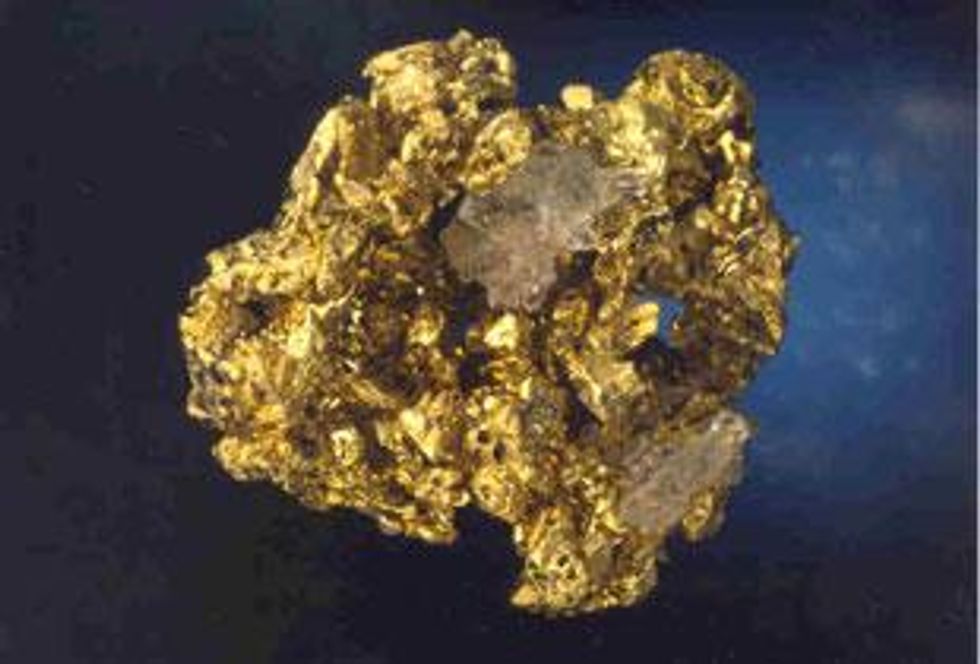The Yukon has a long mining history, with the first reported exploitation of minerals pre-dating European settlement. Despite this long history, the Yukon is considered an underexplored region.
By Leia Michele Toovey- Exclusive to Gold Investing News
The Yukon has a long mining history, with the first reported exploitation of minerals pre-dating European settlement. The first mineral explorers were the aboriginal people who mined native copper nuggets to fashion arrowheads and to trade. Prospecting for placer gold by European settlers began around 1850, shortly after followed the famous Klondike Gold Rush of 1896.Despite this long history, the Yukon is considered an underexplored region. Historically, explorers only had about four months where they could search for mineral deposits, and were not active in the area until about 1960, when helicopters were first used to access remote tracts of land. Over the last 50 years, much has changed in the area. Now, with better infrastructure, better communications and better camps, the field season is year-round. As exploration advances in the region, so does the evidence suggesting that the Yukon may host Carlin-type deposits.
The potential for the Yukon to host the next Carlin-type deposit is very exciting. Carlin-type deposits are found around the world, with The Carlin Trend in northeastern Nevada the most popular example. Carlin deposits are massive, containing sometimes microscopic particles of gold spread throughout a large region. While the deposits may be low grade, which is why they were often overlooked by early prospectors, they are massive in volume. By 2008, mines in the Carlin Trend had produced over 70 million ounces of gold, worth around US$85 billion at 2011 prices.
It often takes sophisticated exploration techniques including assays and microscopes to see the gold particles in Carlin deposits; in fact, Carlin deposits themselves are not fully understood by geologists. Add that to the limited exploration undertaken in the Yukon region, and you have an unanswered question as to whether or not the Yukon could host Carlin-style deposits. So, why is it considered a possibility that the Yukon could host Carlin-type deposits?
In an interview with the Resource Investing News Network, Mike Burke, current Chief Geologist at Golden Predator Minerals, and previously head of mineral services with the Yukon Geological Survey, commented on some facts obtained in his decades of experience in the Yukon. “The primary evidence is the fact that the Selwyn Basin, in the Yukon, has the same geological history as the Great Basin in Nevada,” explained Burke.
Burke added that the rocks in the Selwyn Basin are so similar to those of the Great Basin that he could take rock samples from the Selwyn, and drop them on the ground in Nevada, and no one would even notice that the rocks were not from the region. Burke also added that he has looked over cores from the Selwyn Basin with geologists who have worked primarily on the Carlin Trend in Nevada, and they commented that the rocks looked practically identical.
Many geologists have believed in the Carlin potential of the Yukon for many years, and with recent advancements in exploration, the evidence is mounting.
Whether or not the region hosts a Carlin-type deposit, it most definitely contains a large gold resource, as evidenced by its similarity to the Great Basin. The Great Basin is one of the world’s great metallogenic provinces; it supplies about 11 percent of the total world’s annual production of gold, as well as additional silver and copper. Whether or not the Yukon hosts Carlin-type deposits, the potential for minerals in the area is huge with the existence of SedEx deposits already proven.
Many exploration companies and their financiers believe in the mineral potential of the Yukon, with exploration attracting a growing amount of companies, and funds. According to Greg McCoach, founder and president of The Mining Spectator, $160 million was spent on exploration in the Yukon in 2010 and $320 million in exploration work is planned for this summer 2011.
The Yukon has a long history of placer mining, and when it comes to placer mining, the gold has to originate from somewhere. With the limited exploration performed on the region to date, there have only been a few substantial gold discoveries. Even with the placer mining history as the sole evidence, it is clear that somewhere in the region there must be massive deposits of gold, waiting to be discovered.
A sample of explorers and miners
Constantine Metal Resources Ltd. (TSXV:CEM)
Carlin Gold Corporation (TSXV:CGD)
Northern Freegold Resource Corp (TSXV:NFR)
Colorado Resources (CVE:CXO)
Golden Predator Corp. (TSX:GPD)
ATAC Resources (TSXV:ATC)
Kaminak Gold Corporation (TSXV:KAM)
Taku Gold Corp. (TSXV:TAK)






